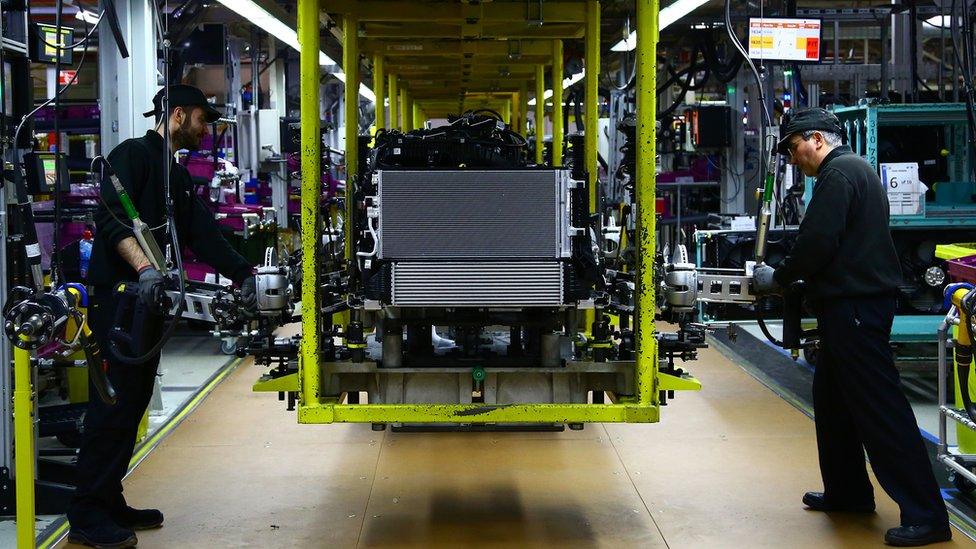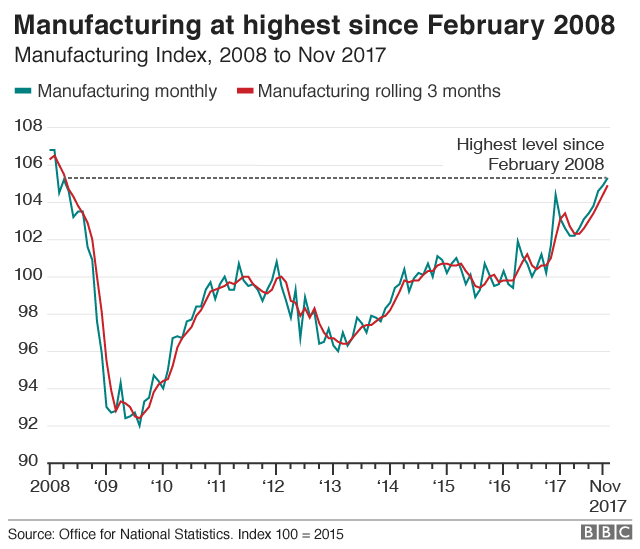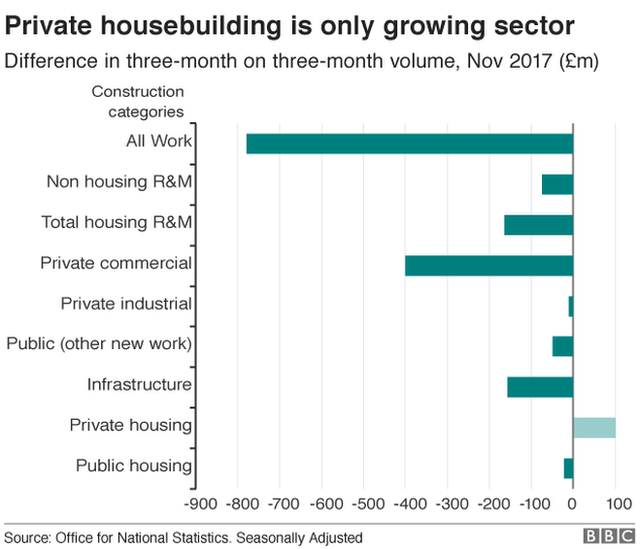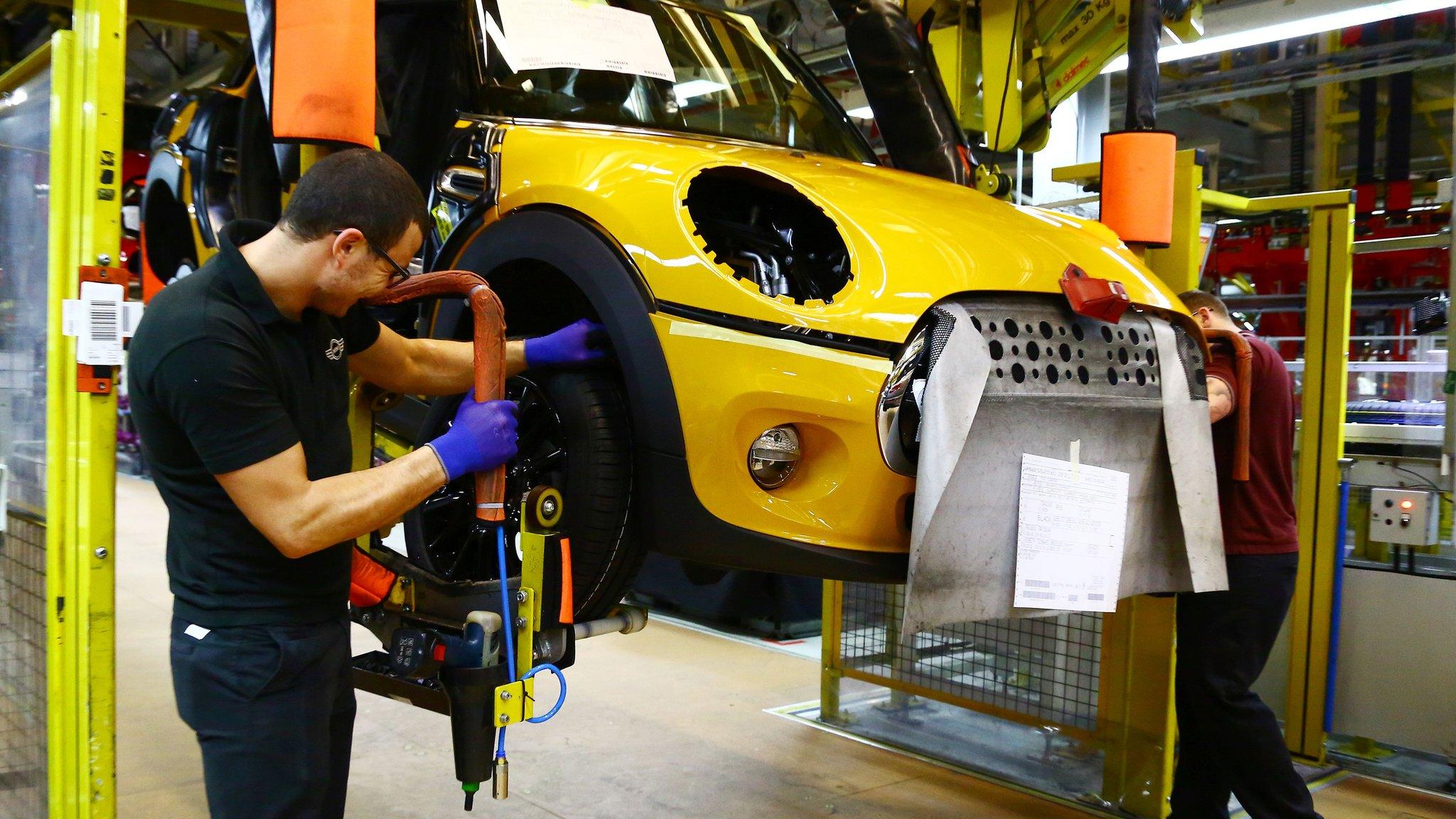UK manufacturing output at its highest for 10 years
- Published
- comments

UK manufacturing output is expanding at its fastest rate since early 2008 after recording a seventh consecutive month of growth in November.
Renewable energy projects, boats, aeroplanes and cars for export helped make output 3.9% higher in the three months to November than in 2016.
Official figures also show industrial output rose , externalby 0.4% in November.
Construction output in the three months to November fell by 2%, compared with the previous three months.
That was the industry's biggest quarterly fall since August 2012, with the only bright spot for the sector being a 1.2% increase in new housing.

For the month of November, total production was estimated to have increased by 0.4% compared with the previous month, with the biggest contribution coming from energy supply.
This increased by 3.2%, mainly because the temperature was warmer than average in October, but colder than average in November.
Economic growth had slowed in the first nine months of 2017 with higher inflation caused by the fall in sterling after the Brexit referendum, although the UK economy did grow by 0.4% in the three months to September.
While the manufacturing figures are good, it is important to note that the sector only makes up roughly 10% of the economy.

Analysis: Kamal Ahmed, BBC economics editor:
British manufacturing is riding high on two big trends - a weaker currency and global growth.
Sterling's fall in value following the Brexit referendum has made UK exports more competitive.
And for the first time since the financial crisis, the three main engines of global growth - the USA, China and Europe - are performing strongly at the same time.
That has led to car exports, for example, rising rapidly - contributing to a narrowing of the trade deficit with the rest of the world.
That's the difference in value between what we import and what we export.
Domestically, the economic picture is more subdued, with growth still sluggish.
The weak construction figures are testament to that.
But, helped by that positive world outlook, Britain's manufacturing sector has not seen such quarterly buoyancy since April 2008.
And it is enjoying its strongest run of growth since 1997.

Lee Hopley, chief economist at manufacturers' organisation EEF, said: "UK manufacturers were, in the main, in good shape as 2017 came to a close, with the majority of sub-sectors enjoying growth.
"Manufacturers' expectations for the year ahead point to output and export growth being maintained through this year on the back of continuing support from a burgeoning global economy.
"This, together with an ongoing commitment from government to deliver on its industrial strategy, will be crucial in helping to propel the sector forward," she said.

Samuel Tombs, chief UK economist at Pantheon Macroeconomics, said: "The downturn in construction activity has been driven by new work in the private commercial sector, which was 5.4% lower in the three months to November than in the previous three months.
"Looking ahead, Brexit uncertainty is likely to continue to hit commercial projects, while the planned 4.5% decline in public sector investment in 2018/19 will additionally dampen the sector."
- Published10 January 2018
- Published8 December 2017
